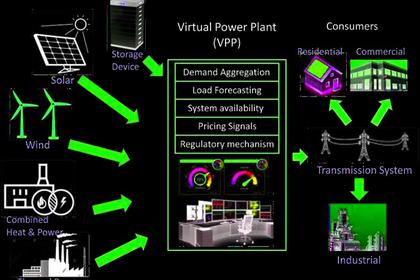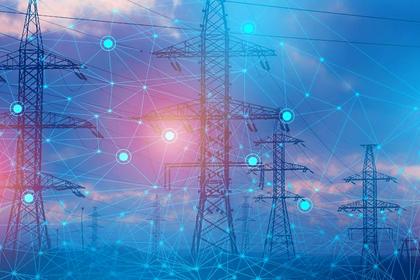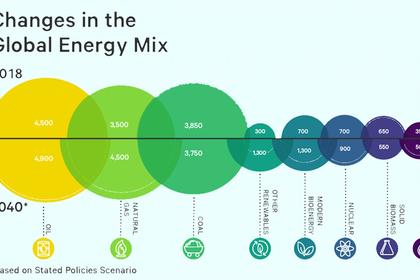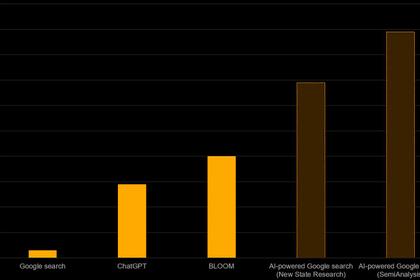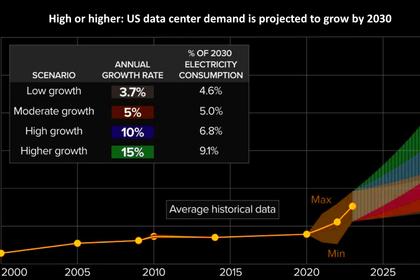
FLEXIBLE ENERGY MANAGEMENT
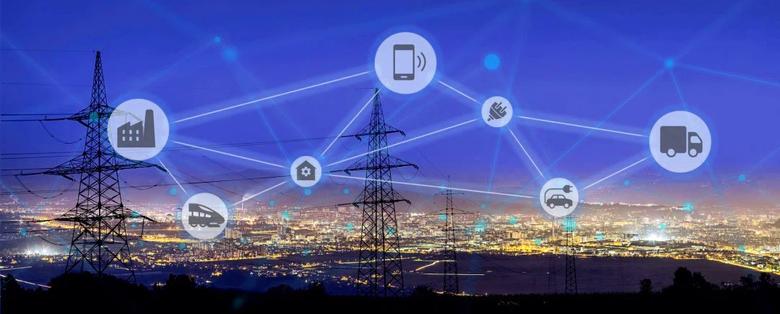
By Florian Kolb Chief Commercial Officer & General Manager Energy, Intertrust Technologies Corporation
ENERGYCENTRAL - Oct 2, 2024 - Historically, the power industry has experienced relatively marginal demand fluctuations. However, the recent surge in AI and the subsequent skyrocketing demand for data center services have introduced a significant new factor and they are the ‘talk of the town’ amongst utility executives.
Data centers consume massive amounts of energy and are one of the most notable developments to have shaken up the energy industry. This rapid growth poses several challenges:
- Securing sufficient power: Meeting the ever-increasing electricity demand of data centers requires reliable and scalable energy sources.
- Grid integration: Data center location and grid infrastructure must be carefully considered to ensure seamless integration and efficient power delivery.
- Latency constraints: Geographical limitations due to latency requirements can complicate data center siting and grid connection strategies.
- Regulatory adaptation: Existing energy regulations may need adjustments to accommodate the unique needs of data centers.
- Energy transition: These challenges coincide with a broader transformation in the energy landscape driven by factors like renewables, electric vehicles, and widespread electrification.
Flexibility is increasingly emerging as a crucial strategy to address all of this at both macro and micro levels. On a macro scale, flexibility is essential for managing energy systems and grids. On a micro scale, it enables individuals and businesses to manage energy consumption, reduce costs, and support sustainability goals. Flexibility refers to the ability to adjust the energy use in response to changing conditions, such as fluctuations in energy supply, demand, prices, availability (renewables) and grid conditions.
Flexibility is essential for data centers. Aligning operational needs as well as assets and technologies deployed in data centers with wholesale and grid balancing markets ensures a highly scalable and cost-effective approach to managing energy consumption.
The most promising development in energy flexibility management is the concept of Virtual Power Plants (VPPs). VPPs leverage digital connectivity, software, and AI to aggregate and manage distributed energy resources (DERs), such as solar, wind, energy storage, and more. This integration enables DERs to function as a unified, flexible power plant, addressing key challenges in the modern energy system via the integration into energy markets.
Data centers are very good VPP candidates and can significantly enhance their energy strategy and contribute to a more sustainable grid by participating in VPPs.
Here's how:
- Optimized Energy Use: VPPs enable data centers to leverage real-time market fluctuations. By shifting energy use to off-peak hours when electricity is cheaper, they can significantly reduce their energy bills.
- Grid Stability and Renewables Integration: VPPs aggregate distributed energy resources like renewables. Data centers, with their significant and flexible energy demand, can help stabilize the grid by integrating more renewable energy sources.
- New Revenue Streams: VPPs can unlock new revenue streams for data centers by facilitating participation in energy markets. This can involve providing ancillary services for frequency regulation and voltage support, or actively trading electricity in wholesale markets (spot/day-ahead).
- Sustainability Boost: Data centers participating in VPPs can significantly increase their reliance on renewable energy sources, reducing their carbon footprint and promoting a more sustainable energy future.
Data centers offer a wealth of capabilities and resources that make them ideal participants in VPPs:
- Real-Time Control and Management: Data centers operate with sophisticated energy management systems, providing real-time data and precise control over energy consumption. This level of granularity is crucial for VPPs to dynamically respond to market needs.
- Integrated Energy Storage: Many data centers already utilize uninterruptible power supplies (UPS) with backup generators and batteries. These existing systems, designed for backup and energy arbitrage, can be seamlessly integrated with the VPP as readily available energy storage resources.[4]
- Flexible Cooling Systems: Advanced cooling infrastructure can adjust its load based on real-time server requirements, further optimizing overall energy efficiency within the VPP framework.
- On-site Renewable Energy: Some data centers are actively incorporating renewable energy generation, such as solar panels or wind turbines, directly reducing their dependence on grid electricity. This on-site renewable energy can be a valuable contribution to the overall VPP energy mix.
- Shifting Processes: Certain data center processes with some flexibility, like batch computing, data replication, or cooling loads, can be strategically shifted to optimize overall VPP operations.
While the benefits of ‘going VPP’ are significant, there are also important economic and operational considerations to address.
Energy market regulations, which vary by region, play a crucial role in determining the full potential of energy flexibility for data centers.
Additionally, data and cybersecurity risks must be carefully managed as data centers become more deeply integrated into the energy system. Implementing advanced security technologies, such as XPN (Explicit Private Networking), can help mitigate these risks by securing all data assets in a zero-trust configuration.
-----
Earlier:

